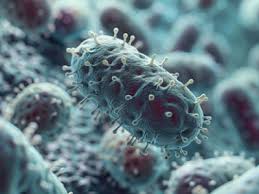Rabies : A Study

A six-year-old girl who was bitten by a stray dog died of rabies recently despite receiving preventive vaccination in Kerala’s Malappuram district.
- Rabies is a deadly zoonotic disease caused by the Rabies virus (RABV) that attacks the nervous system.
- RABV is an RNA virus of the rhabdovirus family that can affect the body in one of two ways.
- It can enter the peripheral nervous system directly and migrate to the brain.
- It can also replicate within muscle tissue, where it is safe from the host’s immune system. From here, it enters the nervous system through the neuromuscular junctions.
- Once inside the nervous system, the virus produces acute inflammation of the brain.
- Transmission: The virus spreads through the saliva of infected animals.
- Infected animals can spread the virus by biting another animal or a person.
- In rare cases, rabies can be spread when infected saliva gets into an open wound or the mucous membranes, such as the mouth or eyes.
- In up to 99% of the human rabies cases, dogs are responsible for virus transmission.
- The incubation period for rabies is typically 2–3 months but may vary from one week to one year, depending on factors such as the location of virus entry and the viral load.
- Initial symptoms of rabies include generic signs like fever, pain, and unusual or unexplained tingling, pricking, or burning sensations at the wound site.
- As the virus moves to the central nervous system, progressive and fatal inflammation of the brain and spinal cord
- Once the virus infects the central nervous system and clinical symptoms appear, rabies is fatal in 100% of cases.
- Rabies is most common in rural parts of Asia and Africa, though it’s found on all continents except Antarctica.
- It is a vaccine-preventable disease.
- Vaccinating dogs, including puppies, is the most cost-effective strategy for preventing rabies in people because it stops the transmission at its source.
- Treatment:
- Medical care following a rabies exposure is called post-exposure prophylaxis, or PEP.
- PEP includes wound care, a dose of Human Rabies Immune Globulin (HRIG), and a series of four or five rabies vaccines, which must be administered as soon as possible after exposure.
- This care is vital to prevent the disease from developing. It is nearly 100% effective if administered promptly.




